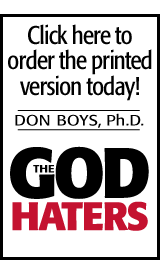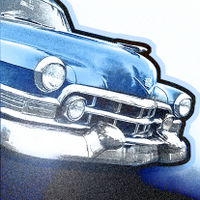Dead in the Back Seat of His Cadillac from Drug Overdose!
[an error occurred while processing this directive]Edit page New page Hide edit links
Country singer Hank Williams, Sr. held the world in his grasp then lost it all in the back seat of his Cadillac dying from a drug overdose on New Years Day, 1953. He was age 29.
He had a string of hits including “I’m so Lonesome I Could Cry” in 1949; and the haunting “Cold Cold Heart” in 1950; and “Your Cheatin Heart” in 1952. It seems that Williams could massage a song to get the most from it and was proficient with his guitar, but he couldn’t handle fame, money, and life in general. He was often drunk or drugged.
His songs reveal that Williams had some exposure to the Gospel. One of his songs reveals his knowledge of salvation “How Can You Refuse Him Now?” The chorus asked: “How can you refuse him now, how can you refuse him now, how can you turn away from His side, with tears in His eyes on the cross there He died, How can you refuse Jesus now?” Hank evidently refused Him.
He wrote his famous “I Saw the Light” in 1948 although the melody was exactly the same as the Chuck Wagon Gang’s 1935 country gospel song, “He Set Me Free.” Williams often sang his song as if he was a man facing the end, desperate to believe in a salvation that he didn’t think existed. Was he trying to convince himself of the reality of the Gospel? He sang: “I wandered so aimless, life filled with sin; I wouldn’t ask my dear Saviour in. Then Jesus came like a stranger in the night; Praise the Lord, I saw the light!”
The chorus went, “I saw the light, I saw the light. No more darkness; no more night. Now I’m so happy no sorrow in sight. Praise the Lord, I saw the light!” The second verse: “Just like a blind man I wandered alone, Worries and fears I claimed for my own. Then like the blind man that Jesus gave back his sight; Praise the Lord, I saw the light!” The third verse: “I was a fool to wander astray, For straight is the gate and narrow is the way. Now I have traded the wrong for the right; Praise the Lord, I saw the light!” But Hank apparently never saw the light! He usually closed his shows with this famous song.
Near the end of his life he was doing a show in San Diego but stumbled drunk off stage after only two songs. His friend, country performer Minnie Pearl tried to sober him as they rode around town in the back seat of his Cadillac so he could do his second show. She got him to join her in singing “I Saw the Light” thinking it might help sober him, but after one verse, Hank put his head in his hands and said, “O Minnie, Minnie, I don’t see no light. There ain’t no light.” But there was light, only it seems Hank refused it.
On Jan. 1, 1953, Williams died in the back seat of his car on the way to a concert in Charleston, WV. He was to do a show the next day in Canton, OH in the Memorial Auditorium. Williams’ Drifting Cowboys band opened the Ohio show with a spotlight on the curtain after the packed crowd was told that Hank Williams had died the previous day. The band, behind the curtain, sang “I Saw the Light.”
More than 20,000 people attended his funeral on Jan. 4 at Montgomery’s (AL) Municipal Auditorium where an overflow crowd listened via loudspeakers. Roy Acuff sang “I Saw the Light” as Hank’s body lay in front of him in its casket. Acuff was joined by Bill Monroe, Little Jimmie Dickens, Carl Smith, Red Foley, Webb Pierce and others. Dickens began weeping uncontrollably during the song. It seemed to be appropriate to this huge crowd of fans that Hank’s “closure” song was used to end his last public appearance—his funeral.
Williams is buried in Montgomery, AL and across the front of his huge tombstone are the words, “Praise the Lord, I Saw the Light.” What a tragedy that a man could talk, write, and sing about seeing the light, and apparently never see it.
Copyright 2005, Don Boys, Ph.D.


More from Misc.
Today I enter into a controversy that I cannot win. It is in fact, like sitting on a buzz saw: Do animals go to Heaven?
…October of 1978. The occasion was the introduction of my bill to make sodomy illegal again in Indiana, as it had been for a hundred years. In fact, I used the same language that was the original law before radicals repealed it a couple years before I was elected to the Indiana House of Representatives.
I suggest if an American citizen forgets, overlooks, neglects, refuses, etc., to pay his taxes and ends up in court, he might try to plead the “Geithner Exception.” After all, if it works for a Patrician, it should work for a peon.
People have responded to some of my articles on the economy and asked for my present opinion… My opinion: It will be worse than I thought! Note that this is my opinion and I hope I am wrong.
I’m very weary of seeing perverts strut the streets exposing their venom, vileness, and violence toward all who dare disagree with their lifestyle. Or is that death style?


Add a Comment
Please be civil.